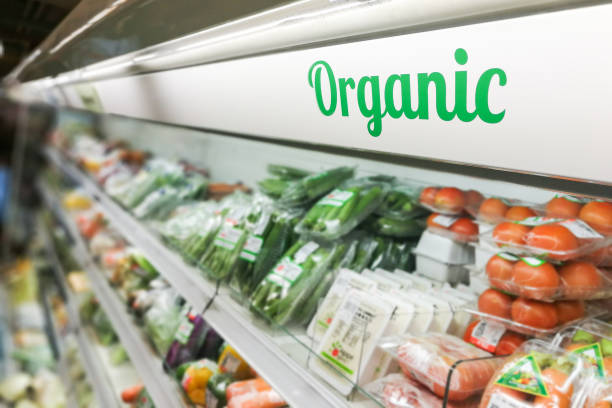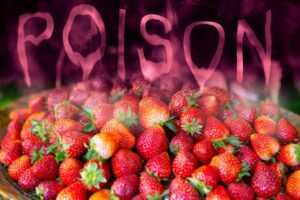Organic Foods – What You Need to Know
There are many benefits to eating organic foods. Here are a few of them: Cost, Pesticide residues, GMOs, and health benefits. In addition to these benefits, organic foods can also lower your carbon footprint. However, there are several questions you should ask yourself before committing to a 100% organic diet.
Health benefits
Organic foods are not only better for your health, but they’re also better for the environment. While organic products are more expensive than conventional products, they’re also better for the farmers who grow them. You can support organic agriculture by purchasing organic products for your family or changing your diet a little. Organic foods are especially beneficial for the elderly, young children, pregnant women, and people with allergies.
Studies have shown that organic foods have higher amounts of antioxidants, vitamins, and other nutrients that fight diseases. In contrast, conventionally grown foods don’t need these compounds to protect themselves from disease. However, there are no clinical studies that have proved the anti-cancer benefits of organic foods. Some researchers have found that organic foods contain more flavones and flavonols, and have a lower risk of developing cancer.
Organic foods are produced without the use of synthetic pesticides and artificial fertilizers. These chemicals are deemed safe to use in small quantities, but can be harmful when exposed to them repeatedly or for long periods of time. Studies show that exposure to pesticide residues may cause ADHD, reduced sperm quality in men, and other health problems. Organic foods also contain more vitamins and minerals, which boost the immune system.
Organic foods are highly nutritious. They don’t contain any synthetic ingredients, and are given ample time to grow in the natural environment. This results in high levels of vitamins and minerals. In addition, the soil is the most effective way for plants to absorb nutrients. Organic foods also contain the highest amount of antioxidants in the world.
Costs
Although it can be hard to believe, organic food can be more expensive than conventional food. This is due to the labor and additional expenditures required for the production of organic foods. As the demand for organic food increases, so does the cost. This trend is driven by the philosophy of organic food, which supports the idea that food grown on organic farms is healthier.
While organic food is generally more expensive than nonorganic items, big-box grocers have been making it more affordable. In a recent study, the Hartman Group found that the average price difference between organic and nonorganic food is smaller than in the past. On average, organic items cost fourteen to twenty percent more than nonorganic items.
The study examined 17 products and determined the premiums consumers paid for organically grown food compared to nonorganic counterparts. In most cases, the premiums were greater than 20 percent. While the premiums varied over the seven-year study, most organic products were still more expensive than nonorganic ones. The premiums varied by product, from seven percent for fresh spinach to 82 percent for eggs.
The cost premiums for organically grown products may vary based on the product’s production process and desired trait. For example, some products may be cheaper than nonorganically grown products because they are more expensive to produce. These premiums can also be affected by economies of scale. Using a statistical model to analyze the costs of organic food can help determine the best value for consumers.
Although organic products tend to be more expensive than nonorganically grown products, the higher prices are justified by the higher demand and supply of organic products. Some farmers calculate their production costs and then add a price margin to make sure they get a reasonable profit.
Pesticide residues
Many organic foods are free of pesticide residues, but there are some exceptions. For example, six of seven samples from a recent USDA study contained residues higher than the 0.01 mg/kg f.w. limit. In many cases, the contamination may have come from spray drift from conventional fields, environmental contamination, or unauthorized use of the pesticides. In other cases, it may have been due to incorrect labeling of conventionally produced foods.
The research team collected samples from an organic market in Warsaw, Poland. The samples were stored at a controlled temperature for 16 hours and then analysed for pesticide residues. The study included 8 batches of apples, nine batches of carrots, and eleven batches of potatoes. Neither the beetroot nor the apple samples tested were contaminated.
To ensure the safety of organic foods, it is important to wash your hands thoroughly after handling them. It is a good idea to scrub produce with a cleaning agent before using it. Also, make sure to peel off the outer layer of fruits and vegetables before you eat them. You should also trim and remove any visible fat from meat and poultry.
In fact, the majority of consumers believe that organic food is healthy and beneficial. They associate organic foods with the absence of agricultural chemical residues, natural taste, and care for the environment. This belief is reinforced by scientific evidence. Organic food has become an increasingly popular option worldwide, and the trend is growing in popularity.
According to recent EFSA monitoring, certain types of fruits and vegetables contain detectable levels of pesticide residues. The percentage of samples containing residues above the MRL is low, but there are some instances where the residues are high.
GMOs
While the US National Organic Program (NOP) allows non-organic ingredients in up to five percent of organic foods and thirty percent of products that are produced with organic ingredients, there are no federal tolerance levels for GMOs. The USDA has approved over fifty ingredients as “non-organic,” but they are not GMOs. Non-organic ingredients are usually corn and soy-based products.
Although GMOs are not considered hazardous to human health, there is still much controversy about whether they’re safe in organic food. There’s a lack of conclusive scientific evidence regarding the safety of GMOs, and organic certification does not allow food that has been engineered at the genetic level.
There are several benefits to organic food, ranging from animal welfare to environmental protection. Organic foods are approved and labeled, and they don’t contain artificial ingredients or coloring. Organic producers use only natural dyes and preservatives. They also avoid the use of ionizing radiation. Consumer preferences for organic foods are growing. According to recent research, the organic market is valued at 97 billion dollars worldwide.
In May 2015, the European Union passed a regulation that banned the sale of genetically engineered foods, but it also allowed the sale of organic products with trace amounts of GMO. However, this change still leaves organic farmers with little protection from the risks of genetically modified crops. The new regulation is said to close a loophole from 1991, when it was allowed to sell organic products with traces of GMO.
In the EU, however, there are no human studies on the health effects of GMOs. Organic farmers are required to be vigilant about neighboring GMO plantings, which is why organic farmers are under more pressure to protect their crops. In addition to this, there are also many reports of GMO contamination in organic foods. One of these cases involved Hawaii, where 50 percent of papayas were grown using RoundUp Ready GMO seeds.
Cost of organic foods
Organic foods can be expensive. In one study, students at Colby College compared the cost of organic and conventional foods. They found that the difference was large. For example, organic brown rice cost 10 percent less than conventional brown rice. But organic ground beef cost 134 percent more than conventional ground beef. While the differences are huge, prices are likely to shrink over time. As more organic farms become available, the benefits of organic farming will be felt more.
In spite of the rising prices of organic food, the average consumer still finds it difficult to afford it. The cost of conventional fruits and vegetables is still less than that of organic products. But, the price of meat and dairy products has been growing faster than that of other organic produce. In the last two years, prices for non-organic produce and meat products increased by 13.1% and 15.6%, respectively.
Although organic produce is more expensive than conventional produce, there are ways to reduce the cost of organic food without compromising on quality. For example, look for discount coupons. You can also cut other expenses to make room for organic food. Alternatively, consider using a budget food delivery service to get organic produce delivered straight to your door.
Organic produce is more expensive than conventional foods, but there are many benefits. First, organic food is better for the environment. It reduces pollution and is less harmful to the environment. Second, it is healthier for the farmer.














